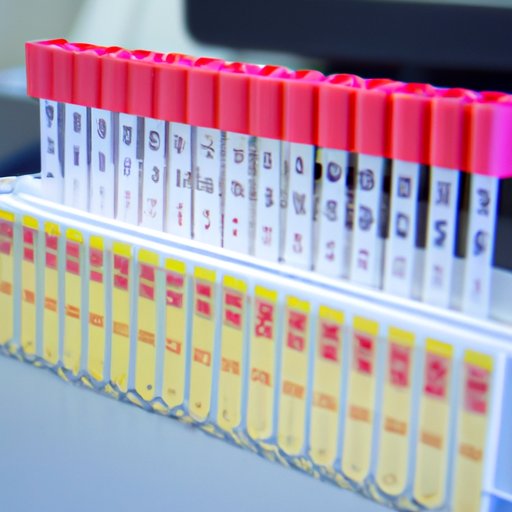Introduction
Polymerase Chain Reaction (PCR) tests are commonly used to diagnose infections caused by viruses, bacteria, fungi, and other microorganisms. By amplifying small amounts of genetic material from a sample collected from a person, the PCR test can detect whether someone has been infected with a particular organism. People often wonder how long it takes to receive a PCR test result and what they can do to reduce wait times.
In this article, we will explore the steps involved in obtaining a PCR test result, examine average wait times, break down factors that affect the turnaround time for PCR tests, investigate potential delays in receiving PCR test results, and discuss strategies for minimizing wait times for PCR tests.
Examining the Process of Obtaining a PCR Test Result
The first step in the PCR testing process is to collect a sample from the person being tested. This sample could be saliva, blood, urine, or another type of bodily fluid. The sample is then sent to a laboratory, where trained technicians use specialized equipment to extract the genetic material from the sample and amplify it. After the amplification process is complete, the technicians can then analyze the amplified sample and determine whether the person has been infected with a particular organism.
Once the analysis is complete, the technicians must submit the results to the doctor who ordered the test. This can be done electronically or through physical mail, depending on the laboratory’s procedures. The doctor will then review the results and contact the patient with the results.

Exploring How Long It Typically Takes to Receive a PCR Test Result
The amount of time it takes to receive a PCR test result varies depending on the type of test being conducted and the laboratory performing the test. Generally, most PCR tests have a turnaround time of 1-3 days, but some tests such as those for HIV and other sexually transmitted infections may take longer.
It is important to note that the timeframe for receiving a PCR test result does not include the time it takes for the sample to be collected and sent to the laboratory. This means that if you are having your sample collected at a hospital or clinic, the total time for receiving a PCR test result can be several days longer than the typical turnaround time.
Breaking Down Factors That Affect the Turnaround Time for PCR Tests
There are several factors that can affect the turnaround time for PCR tests. These include the availability of lab personnel and equipment, the number of samples being tested at one time, and external factors such as weather conditions. If there are more samples to be processed, it can take longer for the laboratory to finish the tests. Additionally, if the laboratory is experiencing any kind of technical issues, this can also delay the process.
In addition to these factors, the quality of the sample being tested also plays a role in determining the turnaround time for PCR tests. Poorly handled or contaminated samples can lead to inaccurate results or even false negatives, which can require additional testing and increase the wait time for results.

Investigating Potential Delays in Receiving PCR Test Results
Sometimes, PCR test results can be delayed due to errors in sample collection or handling. For example, if the sample was not properly handled or stored, it may become contaminated and yield inaccurate results. Additionally, if the laboratory’s system or workflow is not functioning correctly, this can cause delays in receiving PCR test results.
It is important to note that these types of delays are rare and usually only occur when there are serious problems with the laboratory’s processes or systems. However, it is still important to be aware of the potential for delays when ordering a PCR test.

Strategies for Minimizing Wait Times for PCR Test Results
There are several strategies that can help minimize wait times for PCR test results. First, it is important to prepare adequately for the test. This includes making sure that the sample is properly collected and stored and following all instructions given by the doctor or lab technician. Additionally, it is a good idea to contact the lab to check the status of the test, as this can help identify any potential delays.
Finally, if the wait time for the test results is too long, it may be worth asking your doctor if they can recommend another laboratory. Different labs may have different turnaround times, so it is possible to find one that can provide results faster.
Conclusion
PCR tests are an effective way to diagnose infections caused by viruses, bacteria, fungi, and other microorganisms. However, people often wonder how long it takes to get a PCR test result. In this article, we explored the steps involved in obtaining a PCR test result, average wait times, factors that affect turnaround time, and strategies to reduce wait times.
Understanding the PCR testing process and what affects the turnaround time for PCR test results helps people understand why it may take so long to get their results. By preparing adequately for the test, contacting the lab to check the status of the test, and asking your doctor if they can recommend another lab, it is possible to reduce wait times for PCR test results.
(Note: Is this article not meeting your expectations? Do you have knowledge or insights to share? Unlock new opportunities and expand your reach by joining our authors team. Click Registration to join us and share your expertise with our readers.)
